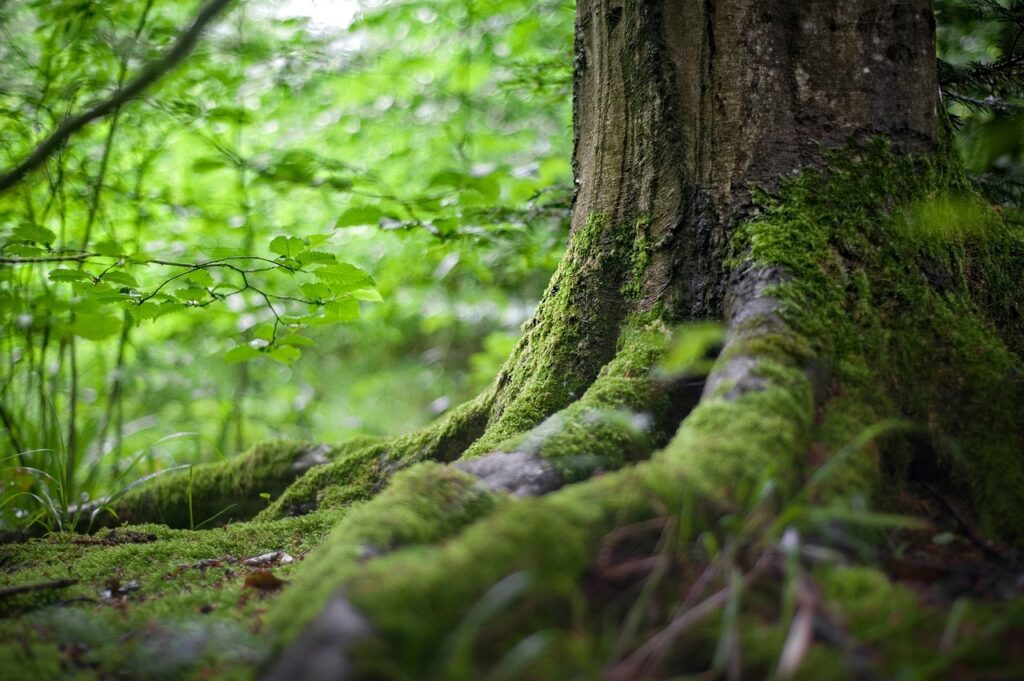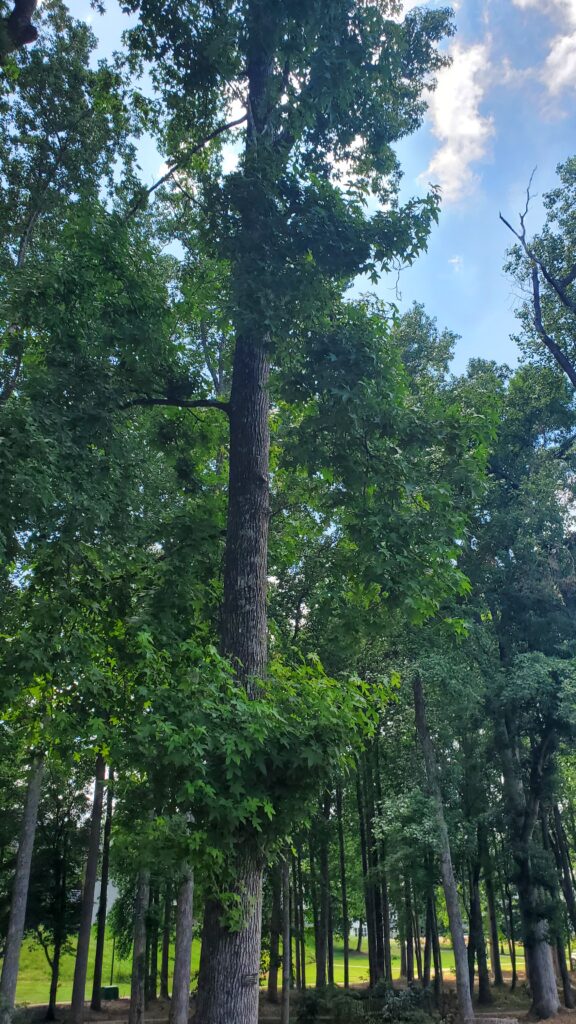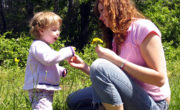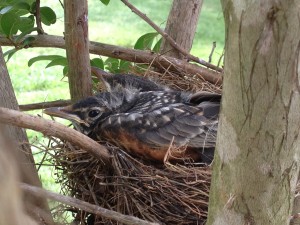
When you walk outside, you’re bound to hear leaves rustling and branches creaking in the wind. It may sound like the trees are communicating to one another. However, trees actually talk to each other in ways that humans are unable to hear and even see.
Fungal Foundations
 One way trees communicate is through a fungal network just beneath the soil. This network is called a mycorrhizal network, which is made out of mycelium. Mycelium is a part of a type of fungi that consists of little threads in the soil. These are connected to a larger fungal organism that wraps around and tunnels into tree roots. The connection of these threads of mycelium from different trees creates the mycorrhizal network. Through this network, trees are able to send water and nutrients to each other, as well as alert other trees to things such as environmental changes and danger. Some scientists believe that mycorrhizal networks can also help trees respond to a changing climate.
One way trees communicate is through a fungal network just beneath the soil. This network is called a mycorrhizal network, which is made out of mycelium. Mycelium is a part of a type of fungi that consists of little threads in the soil. These are connected to a larger fungal organism that wraps around and tunnels into tree roots. The connection of these threads of mycelium from different trees creates the mycorrhizal network. Through this network, trees are able to send water and nutrients to each other, as well as alert other trees to things such as environmental changes and danger. Some scientists believe that mycorrhizal networks can also help trees respond to a changing climate.
The fungi also benefit from this relationship with the trees. They acquire around 30% of the trees’ sugar that it makes from photosynthesis. This helps fuel their growth and reproduction, enabling them to expand their networks and support more trees within the ecosystem.
However, the mycorrhizal networks of the trees can be threatened by environmental changes. Cutting down these trees can cut other trees off from the nutrients they were receiving, making it more difficult for them to survive. Soil disturbances and pollution can also disrupt these delicate networks, further impacting the health of forest ecosystems.
 Communicating Care
Communicating Care
Trees also have the ability to know when another tree is related to them. Older, taller trees are often known as mother trees because they give nutrients to saplings in order to help them grow and thrive. These mother trees also have the ability to recognize when a sapling is related to them, and they will favor giving nutrients to these saplings over other saplings. The mother trees use the mycorrhizal networks to send anything from sugar and water to phosphorus and carbon in order to help the smaller saplings get the nutrients they need to grow. Mother trees can increase a sapling’s ability to survive up to 400%. It has been shown that when these older mother trees are cut down, saplings are less likely to survive.
Airborne Alerts
Although trees often communicate underground, they can also communicate through the air. Certain trees have evolved to send danger signals through the air as well as the ground. They do this by using pheromones or other intense scents to alert nearby trees of danger. For example, in Africa, giraffes’ main diet is acacia trees’ leaves. In order to avoid being eaten, acacia trees have evolved to emit ethylene gas when their leaves are chewed. This gas alerts the other acacia trees to increase the tannins in their leaves, which are toxic to giraffes in large doses.
So, the next time you are walking through a forest, take a moment to recognize that the trees around you are communicating in complex and intricate ways.
Learn More!
Want to learn more about how trees communicate? Check out these great articles:
“Exploring How and Why Trees ‘Talk’ to Each Other.” Yale School of the Environment.
“How Do Trees Communicate?” OneTreePlanted.org.
“Underground Networking: The Amazing Connections Beneath Your Feet.” National Forest Foundation.











1 Comment
Such an excellent and informative article!